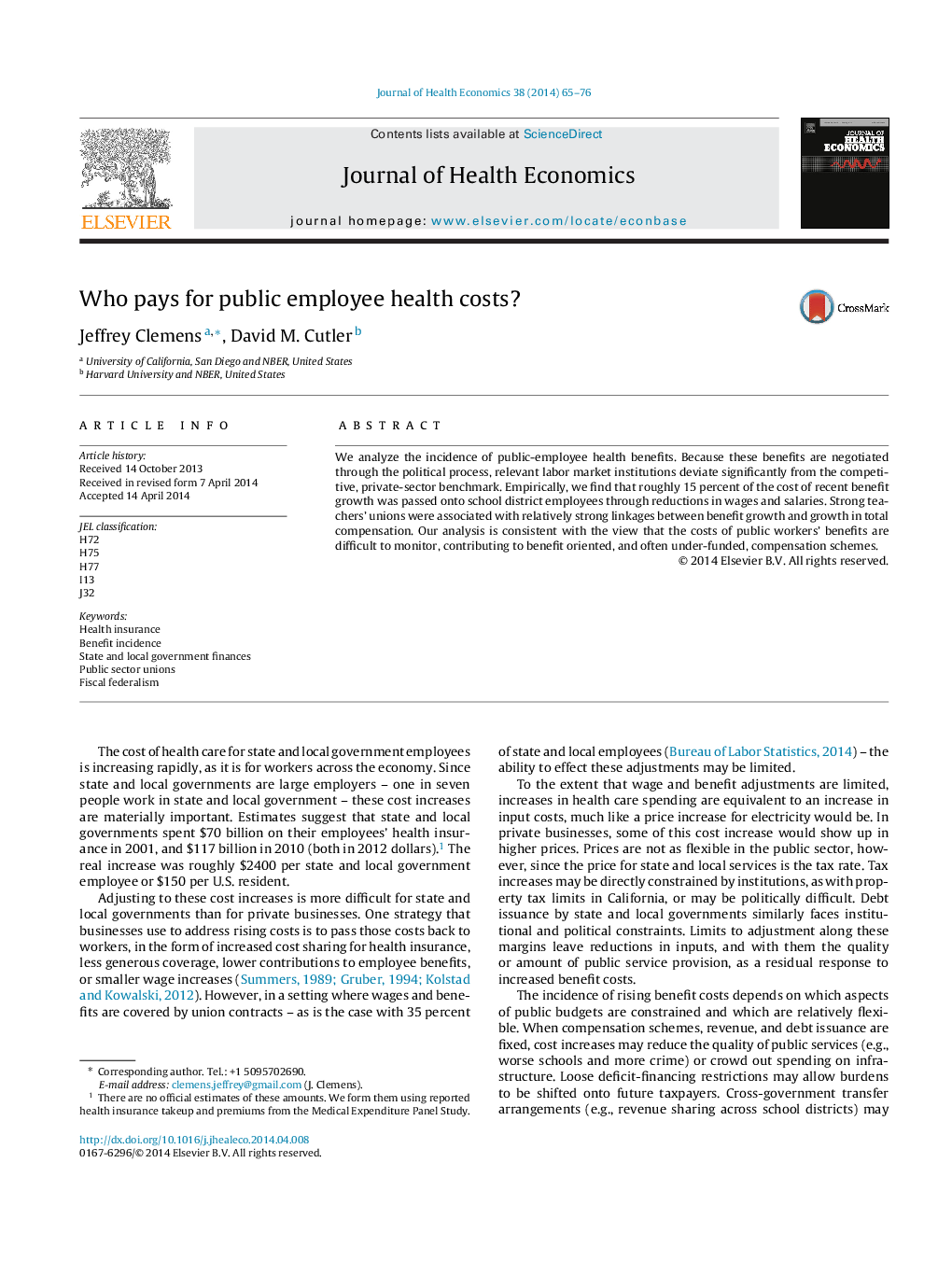| Article ID | Journal | Published Year | Pages | File Type |
|---|---|---|---|---|
| 961208 | Journal of Health Economics | 2014 | 12 Pages |
Abstract
We analyze the incidence of public-employee health benefits. Because these benefits are negotiated through the political process, relevant labor market institutions deviate significantly from the competitive, private-sector benchmark. Empirically, we find that roughly 15 percent of the cost of recent benefit growth was passed onto school district employees through reductions in wages and salaries. Strong teachers' unions were associated with relatively strong linkages between benefit growth and growth in total compensation. Our analysis is consistent with the view that the costs of public workers' benefits are difficult to monitor, contributing to benefit oriented, and often under-funded, compensation schemes.
Related Topics
Health Sciences
Medicine and Dentistry
Public Health and Health Policy
Authors
Jeffrey Clemens, David M. Cutler,
